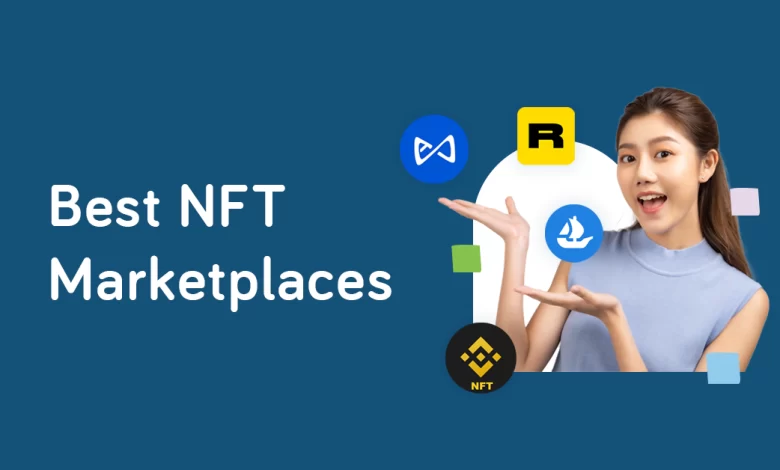Understanding NFT Marketplaces: A Comprehensive Guide

From viral tweets selling for millions of dollars to digital art pieces fetching prices that rival their traditional counterparts, the NFT (non-fungible token) market has captured the imagination of artists, collectors, and investors alike. But what exactly is an NFT marketplace, and how does it fit into the broader blockchain ecosystem? In this comprehensive guide, we’ll delve into the world of NFT marketplaces, their significance, functioning, benefits, challenges, and provide valuable insights on how to navigate these digital bazaars. Whether you’re a seasoned crypto investor or a novice intrigued by the latest trends, read on to gain a deeper understanding of this booming sector.
What Are NFT Marketplaces?
NFT marketplaces serve as online platforms where non-fungible digital assets, such as art, videos, music, collectibles, virtual real estate, and more, can be bought, sold, and traded. Unlike cryptocurrencies that are interchangeable with each other and have the same value (hence fungible), NFTs are unique, each containing distinct information that sets them apart. This uniqueness makes NFTs ideal for representing ownership of one-of-a-kind items in the digital world.
Popular NFT Marketplaces and Their Features
NFT marketplaces come in various shapes and sizes, with each offering its unique set of features to cater to the diverse needs of creators and collectors. Here’s a glimpse at some popular NFT marketplaces:
- OpenSea: Often dubbed as the ‘eBay of NFTs,’ OpenSea is the largest NFT marketplace that facilitates the trading of a vast array of digital assets. It provides tools for creating, buying, and selling these items seamlessly.
- Rarible: Known for its user-friendly interface, Rarible is both a marketplace and a decentralized autonomous organization (DAO), allowing its members to shape the future of the platform with a voting system.
- Foundation: Focusing on supporting individual creators and collaborative initiatives, Foundation has a curation-first approach, striving for high-quality and innovative content.
- SuperRare: Catering to digital artists looking to showcase and sell their works, SuperRare emphasizes curation, and every piece on the platform is unique and highly collectible.
Each of these platforms has its strengths and appeal to different user segments, from casual art enthusiasts to serious art collectors and savvy investors.
How NFT Marketplaces Work
For creators, the process of selling their work on an NFT marketplace begins with minting, the creation of a token on the blockchain that represents their digital asset. This token is the NFT itself and contains metadata that describes the asset and proves its uniqueness. Creators can then list their NFTs for sale and set parameters like price and royalties for secondary sales.
On the other side, collectors use cryptocurrency to purchase these NFTs, after which they own the token and, by extension, the digital asset it represents. Once the transaction is complete, the new owner’s wallet is credited with the NFT, and the previous owner is paid. All of these operations are executed with the help of smart contracts — self-executing contracts with the terms directly written into the code — which automate the entire process and provide transparency and security through the blockchain. This underlying technology ensures that the provenance of an NFT can be verified, and its path of ownership traced back to its original creator.
Benefits of NFT Marketplaces
NFT marketplaces have created a paradigm shift, particularly for digital artists and creators who previously struggled to monetize their work. Here are some of the significant benefits of these platforms:
Increased Accessibility for Artists
By leveraging NFT marketplaces, digital creators can bypass the traditional gatekeepers of the art world, such as museums, galleries, and auction houses, allowing them to share and sell their work directly to a global audience.
Global Reach and Exposure for Collectors
Art collectors and enthusiasts now have access to an unprecedented range of digital masterpieces, opening up new avenues of collecting and appreciating art in a medium that was previously undervalued.
Potential for Financial Gains
The resale of NFTs can enable artists to receive royalties every time their work is sold, creating long-term value for their creations. Collectors and investors, in turn, have the opportunity to profit from the appreciation of these assets, with some NFTs fetching significant returns in the secondary market.
Challenges and Considerations
Despite the excitement surrounding NFT marketplaces, several challenges and considerations loom large:
Scalability and Environmental Concerns
The energy consumption associated with blockchain and NFT transactions, often criticized for its environmental impact, is a significant challenge that the industry must address, particularly as these markets continue to grow.
Copyright and Ownership Issues
Navigating copyright law in the digital realm can be complex, and the veracity of ownership claims for certain NFTs has been brought into question. Creating NFTs for work that one does not have the rights to may lead to legal complications, and better frameworks are needed to handle these issues.
Market Volatility and Risks
The NFT market, like the cryptocurrency market, is known for its volatility. The stark rise and fall of prices, as well as the potential for fraud and theft, pose risks that both creators and investors should be wary of.
Case Studies
In the rapidly evolving world of NFT marketplaces, innovation and success stories abound. Projects such as Bitquery have turned traditional data analysis on its head by utilizing blockchain analytics to decode NFT market trends, helping stakeholders make more informed decisions.
Bitquery: A Case Study in NFT Market Analysis
Bitquery’s platform provides real-time blockchain data and analytics, enabling users to monitor and analyze market movements, token flows, and smart contract activity. This level of transparency and insight is invaluable in understanding and predicting the behavior of NFT markets, making Bitquery a vital tool for both seasoned and novice market participants.
Tips for Navigating NFT Marketplaces
Entering the NFT market can be daunting, but following these tips can help you navigate these novel marketplaces more successfully:
- Do Your Research: Before purchasing or minting NFTs, thoroughly research the artist, the project, and the marketplace. Understand the digital asset, its value proposition, and its long-term potential.
- Understand Transaction Costs: NFT transactions often come with high gas fees, which can vary depending on network congestion and the type of transaction. Be prepared for these costs, and factor them into your investment decision-making.
- Security First: Just like with traditional art, security is crucial. Store your NFTs in reputable digital wallets, and be vigilant against phishing attempts and scams.
Conclusion
NFT marketplaces represent a compelling convergence of technology, art, and online investing, creating new opportunities and reimagining established paradigms in the world of digital ownership and expression. They are not without their challenges, but the benefits they offer to creators, collectors, and investors are significant. As with any emerging market, education and informed participation are key.
Whether you’re an artist looking for a new way to share your creations, a collector seeking the next digital masterpiece, or an investor assessing the potential of NFT markets, understanding how these platforms work, their benefits, and their pitfalls will be invaluable. As NFTs and their marketplaces continue to mature, those with a nuanced understanding of the ecosystem will be best positioned to thrive in this exciting digital renaissance.
Stay informed, stay curious, and consider the profound implications of this bold new frontier. And remember, in the ever-evolving world of NFTs, what was unimaginable yesterday may well be the reality of tomorrow.




